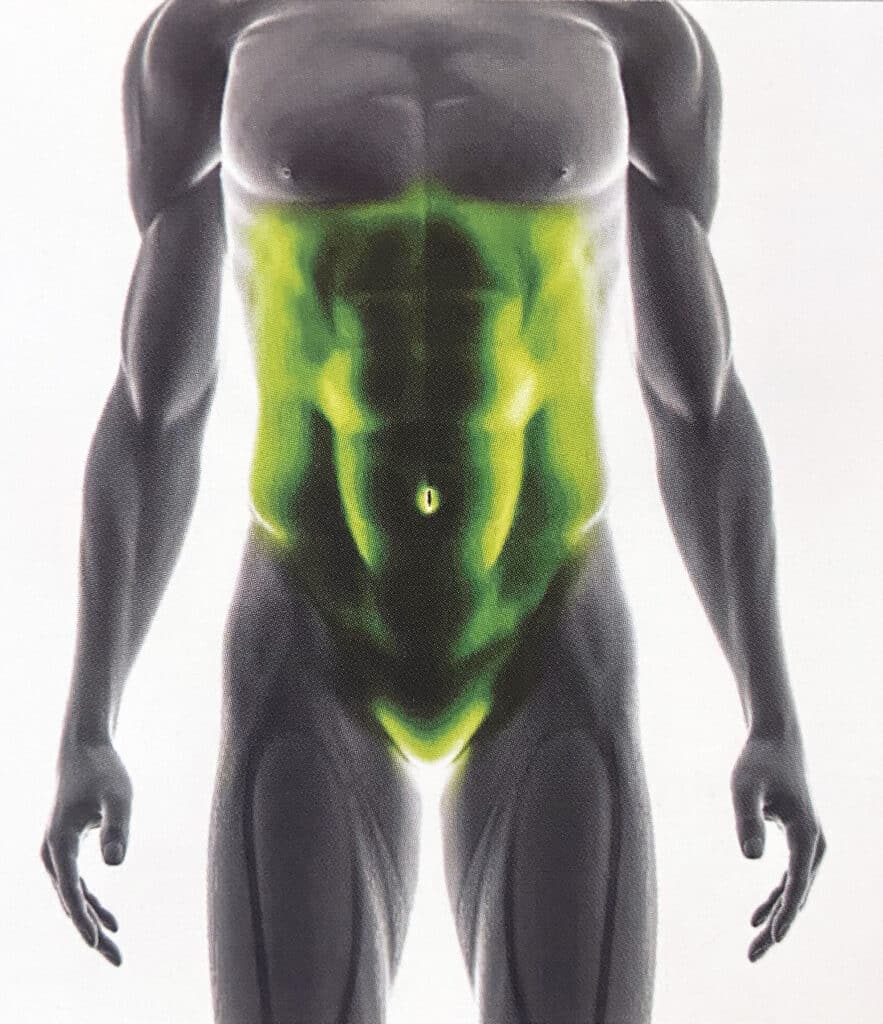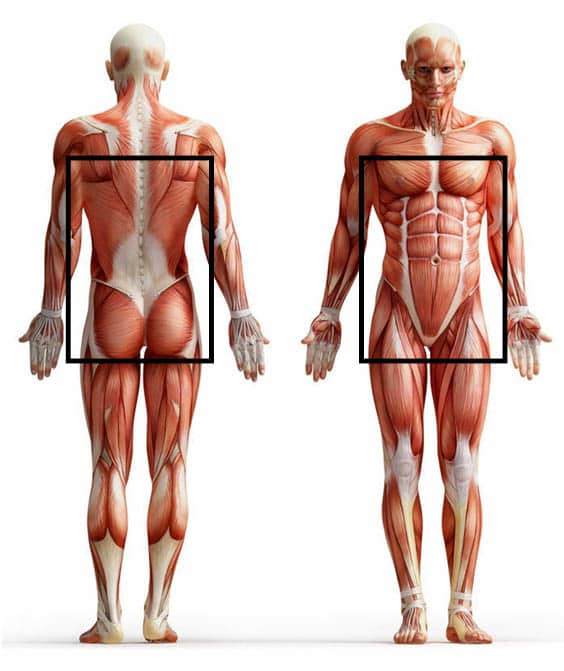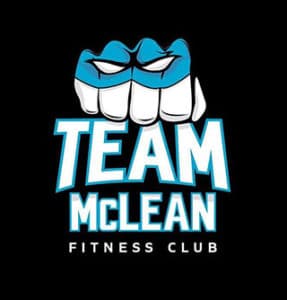Mat + Reformer Pilates; The Powerhouse

This ‘Powerhouse’ of stabilising muscles are there to create balance and safety when moving in daily life activities as well as exercising. They not only provide stability, but also protection of your spine and organs. Activating these key areas will ensure a safe and efficient training session. If there is any discomfort, ache or pain in the lower back area, this means that the core muscles are now disengaged and to stop exercise immediately. Rest, reset, re-engage and then continue, if there is still pain, reduce the range of movement or do a regression or alternate exercise.
Stabilising muscles: The main stabilising muscles in your torso;
- Pelvic Floor = the urine control
- Transverse Abdominus = internal abs
- Multifidus = lower back
- Glutes = the muscles that contain your butt
Lifting your Pelvic floor: Your pelvic floor is in a part of the key stabilising muscles in your torso. The pelvic floor/ pubic symphysis, is an area of muscle that needs to be focused on to contract and to pull in towards the centre of your torso. As you cannot see these muscles, we need to visualise, to learn how to engage them. Think about the muscles you use to hold in your pee when you need to go to the toilet. Drawing these up/ lifted, engages the pubic region muscles.
Transverse Abdominus: We have two layers of abdominal walls. (External – outer ‘six pack’ and internal – trans abs). These are also a part of the key stabilising muscles in your torso. To activate the internal abdominal wall, is to gently pull the belly button/ navel in towards the spine.

Breathing: Seems simple enough, but sometime while concentrating so hard, we forget to breathe! So while we are engaging these key areas of our Core; Pelvic Floor and the Transverse Abs- we need ensure there is a focused breathing rhythm also. It is so easy to forget to breathe while concentrating on the scooping action. Again it is a gentle breath, not filling the lungs too much but just enough to get through the action. An easy way to remember is to breathe in through nose to prepare and breathe out through mouth on the exertion (hard/power) phase.
Neutral Spine: The spine has natural curves from in the neck through to the pelvis. In a neutral spine, the shoulders are directly over the pelvis with the head and neck aligned above the spine. Due to poor posture, repetition of movements and lifestyle factors, these days we have a tendency to be hunched over, have tight and tilted hips and weak glutes. There is a method to find your neutral spine; by forcing the two extremes of the hips we can find a middle ground. A dramatic Posterior / backwards tilt of the hips (sticking your bum out the back) and then forward tucking your pelvis under, curving the buttocks inwards to make a C curve. Then finding a neutral/ natural position between these two actions.
The Powerhouse is key when performing Mat Pilates and Reformer Pilates programs. Join in on our sessions – what do you have to lose?
